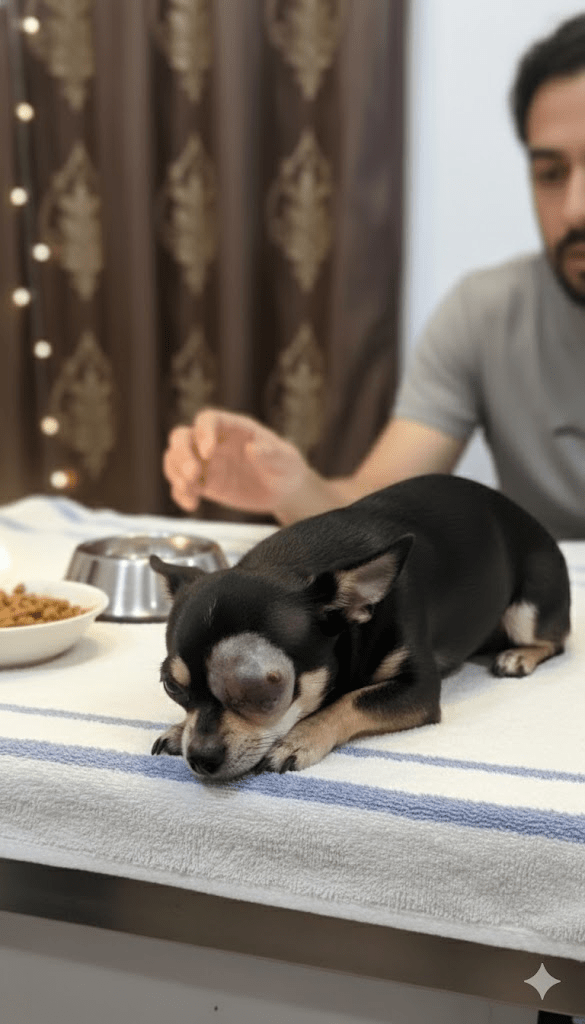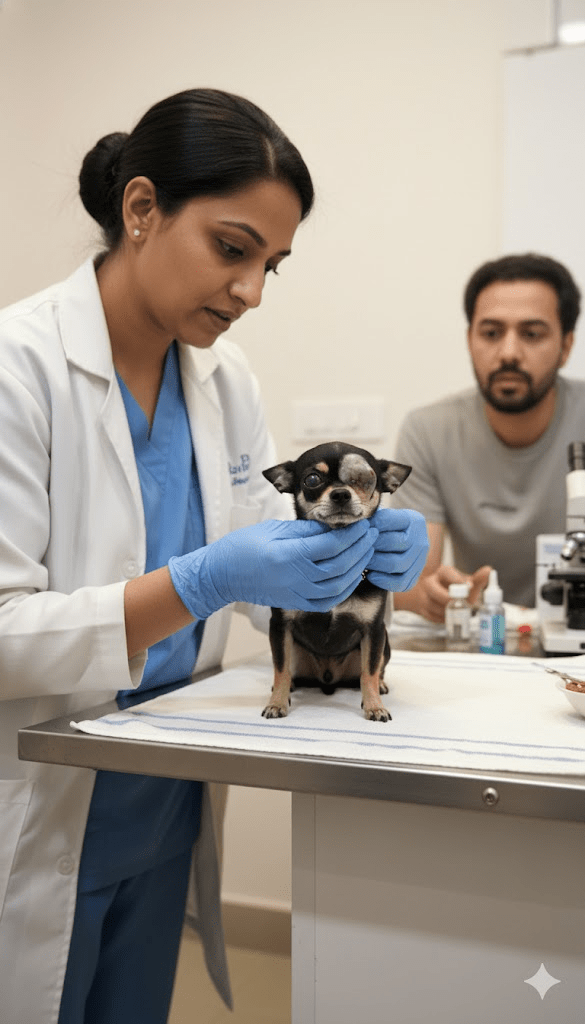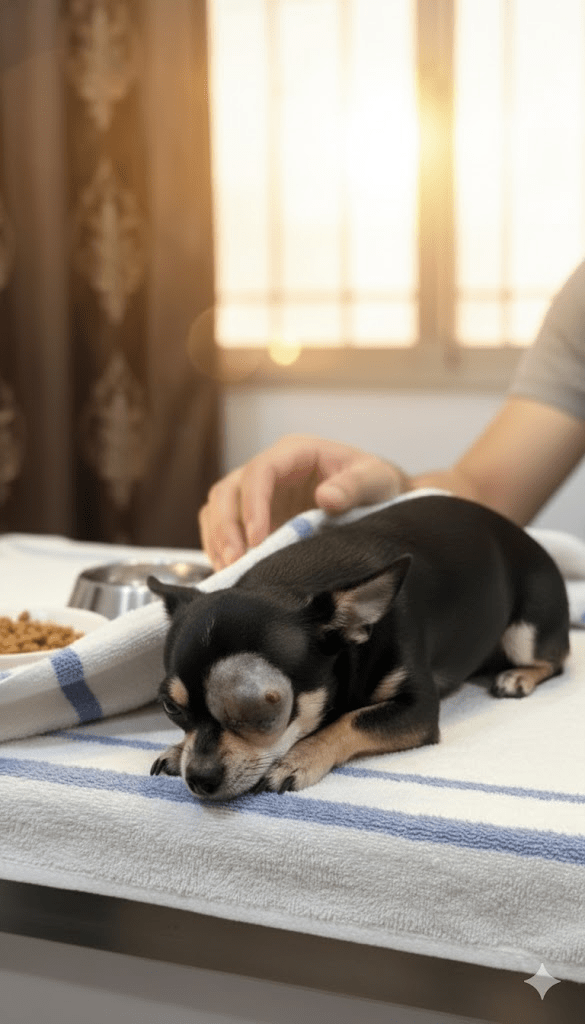In the heart of every pet owner lies a deep well of affection and concern for their beloved animals. The journey of pet ownership, while overwhelmingly joyful, can sometimes present unforeseen challenges, particularly when our furry friends face health adversities. The image before us – a small chihuahua with a visible eye injury, yet an undeniably resilient spirit – serves as a poignant reminder of the strength and vulnerability inherent in our canine companions. This isn’t just a picture of a dog; it’s a testament to the enduring bond we share with them, and a call to action for empathy, understanding, and proactive care. It compels us to look beyond the immediate visual and delve into the layers of what it means to support a pet through illness or injury, to celebrate their unwavering spirit, and to advocate for their well-being. This article aims to explore the multifaceted aspects of canine resilience, the critical role of veterinary care, the psychological impact of injuries on pets and owners, and the enduring power of love and dedicated support in their recovery journey. It is a narrative woven with threads of compassion, practical advice, and an unwavering belief in the capacity of animals to overcome even the most daunting obstacles with our help.

The Silent Language of Pain: Recognizing Canine Distress
One of the most challenging aspects of pet ownership is discerning when our animals are in pain, as they instinctively try to mask their discomfort. Unlike humans, dogs cannot articulate their feelings with words, making it crucial for owners to become astute observers of their behavior. A sudden change in demeanor, such as lethargy, loss of appetite, reluctance to play, or unusual aggression, can all be indicators of underlying issues. In cases of physical injury, like the eye condition seen in our featured chihuahua, symptoms can be more obvious – swelling, discharge, squinting, or pawing at the affected area. However, even with visible injuries, the extent of their discomfort may not be immediately apparent. Understanding these subtle cues is the first step towards providing timely and effective care. Early detection and intervention are paramount in preventing minor issues from escalating into more serious conditions, and in minimizing the animal’s suffering. It requires a keen eye, a patient heart, and a proactive approach to pet wellness.

The Cornerstone of Healing: The Role of Veterinary Expertise
Once signs of distress or injury are identified, the immediate course of action must be to seek professional veterinary care. Veterinarians are not just doctors for animals; they are diagnosticians, surgeons, pharmacists, and compassionate caregivers all rolled into one. Their expertise is invaluable, especially in complex cases like ocular injuries. A thorough examination, which may include diagnostic tests such as blood work or imaging, is essential to accurately diagnose the problem and formulate an appropriate treatment plan. This plan might range from medication and close monitoring to surgical intervention, depending on the severity and nature of the injury. Trusting in your vet’s judgment and following their instructions meticulously are critical for a successful recovery. Moreover, understanding the prognosis and potential long-term care requirements is vital for owners, allowing them to prepare emotionally and practically for the road ahead. The relationship between a pet owner and their veterinarian is a partnership, with the animal’s well-being at its core.

Beyond Physical Wounds: The Emotional Impact on Pets and Owners
An injury or illness affects not only the physical health of a pet but also their emotional well-being. Animals can experience fear, anxiety, and even depression when in pain or confined during recovery. Their routines are disrupted, their freedom of movement limited, and their natural instincts potentially suppressed. This emotional distress can, in turn, impede their physical healing. Similarly, pet owners often experience a range of intense emotions, from worry and guilt to sadness and helplessness. Witnessing a beloved pet in pain is incredibly difficult, and the stress of managing their care can be overwhelming. Recognizing and addressing these emotional aspects is crucial for both parties. Providing a calm, comforting environment, maintaining as much routine as possible, and offering gentle reassurance can significantly aid a pet’s emotional recovery. For owners, seeking support from fellow pet parents, veterinary staff, or even professional counselors can help navigate the emotional toll of their pet’s illness.

The Healing Power of Home: Convalescence and Ongoing Support
The veterinary clinic is where initial diagnosis and critical care often take place, but the bulk of a pet’s recovery journey happens at home. This convalescence period is vital and requires unwavering dedication from the owner. Administering medications on schedule, ensuring the pet gets adequate rest, preventing them from exacerbating their injury (e.g., preventing a dog from scratching an eye wound), and adhering to dietary restrictions are all part of the daily routine. Depending on the injury, physical therapy or specialized exercises might be recommended to help regain mobility or function. Creating a safe, comfortable, and stress-free environment is paramount. This might involve setting up a quiet recovery space, providing easily accessible food and water, and limiting interaction with other pets or boisterous children temporarily. Regular follow-up appointments with the veterinarian are also crucial to monitor progress and adjust the treatment plan as needed. This phase is a marathon, not a sprint, and requires patience, consistency, and a deep well of love.







